Australian Limes
Lenore Lindsay
This article has been compiled from information in "Australian Horticulture" November 2005 and "Quandong" (newsletter of the West Australian Nut and Tree Crop Association) Vol 32 No 2.
For many years, Australian limes (finger, round and desert), have been popular with native plant and bush food enthusiasts, but relatively unknown to other gardeners. Now they are finally beginning to join the Macadamia as an Australian native in mainstream gardens and commercial plantings.
Native limes occur in the warm regions of Queensland, New South Wales and South Australia and, until recently, were included in the genera of Microcitrus and Eremocitrus. All have now been included in the larger genus of Citrus.
The Finger Lime (Citrus australasica) is a particularly outstanding evergreen fruiting plant which grows four to eight metres tall by two to five metres wide with small, glossy, dark green leaves on thorny branches. Small, fragrant white to pinkish flowers are produced mainly in autumn, followed by citrus fruits which usually have a yellowish-green to purplish skin and are about 10 cm long by 1.5 cm wide. They mature in winter and spring.
| |
| Round Lime, Citrus australis |
Jan Sked
The round lime is a small tree to about 5 metres in height, often densely foliaged, with stiff, oval, dark green, glossy leaves, 0.5-5 cm long, that are sometimes slightly scalloped towards the ends. Leaves can be very variable in size and shape and have a lovely citrus odour when crushed. It has sharp thorns in the leaf axils.
Fragrant white flowers are produced singly or occasionally in small clusters in the leaf axils in winter. Fruits are round and green, up to 5 cm across, like an unripe orange. They ripen in late spring and summer. These fruits are good for making marmalade and for citrus drinks.
Round lime occurs naturally in lowland rainforests and along watercourses in south-east Queensland. It will grow in sun or shade in well mulched soils, and can be kept as a container plant. It is slow growing and will benefit from light applications of fertilizer and additional water in dry periods.
Propagation is from fresh seed or cuttings.

|
|
The fleshy pulp is in small globular segments with an appearance similar to caviar, full of juice with a sharp lime flavour. The segments can be squeezed from the fruit and eaten fresh, used in drinks, marmalades, cakes, desserts or other recipes, or used as a tasty and decorative garnish to cooking.
The finger lime occurs in the subtropical rainforest regions of north-eastern New South Wales and south-east Queensland but will grow and fruit as far south as Melbourne. They can tolerate light frosts but appreciate watering during extended dry periods. Plants respond well to light pruning, which will encourage bushy growth.
New cultivars of this finger lime have been developed by the CSIRO and are available for the home gardener.
The Australian Red Centre Lime, also known as the Australian Blood Lime, to which Plant Breeders' Rights (PER) apply, is a cross between a finger lime and a mandarin. The white flowers are flushed with purple on the outside. Foliage is also purple tipped. The oval fruit, usually mature in June-August, has dark red flesh and pink-red juice.
In the Australian Sunrise Lime (PBR), the finger lime has been hybridised with a calamondin (a cross between a mandarin and a cumquat). The fruit matures from July to September and is somewhat pear shaped with orange flesh and juice. The new foliage tips are reddish and white flowers are produced mainly in spring.
Citrus australasica var sanguinea 'Rainforest Pearl' is a pink-fruited cultivar of the finger lime with PBR classification applied for by Byron Bay Native Produce, Bangalow, New South Wales.
Besides the finger limes, there is the Australian Desert Lime, Citrus glauca. This occurs naturally in more arid regions of inland Queensland, New South Wales and South Australia. Plants are relatively erect and can grow 2 m to 7 m tall with small dark green leaves and reddish new tips on spiny stems. Small, rounded, juicy green fruits up to 2 cm across are produced later in the year than the finger lime varieties; about Christmas to late summer.
These lime plants are well suited to container cultivation or as decorative evergreen garden trees. While it is important that our native plant species be appreciated and retained for their genetic integrity and as part of our natural heritage, it is also exciting to see them being developed in conjunction with other closely related species to produce new cultivars.
The Blood, Sunrise and Desert Limes are available as grafted standards.
Australian Citrus species are grown by specialist Australian plant nurseries, rainforest nurssries and fruit tree growers.
Further Information
Further information is available from a number of online references, including:
From the newsletter of ASGAP's Australian Food Plants Study Group, May 2006 and the newsletter of the Society for Growing Australian Plants (Queensland), December 2006.
Australian Plants online - 2006
Association of Societies for Growing Australian Plants
|